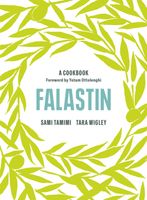Label
All
0
Clear all filters
The art of tahini: one man’s quest to get it just right
Appears in
By Sami Tamimi and Tara Wigley
Published 2020
Behind every great Palestinian dish lies a swirl of tahini. Maybe not every single dish and maybe more or less than a swirl, but, still, it’s the absolute golden stuff, very often there in the foreground, background or alongside a dish.
In the foreground you’ll see it drizzled over anything to come near it without an umbrella: baked kofta, grilled meat or fish, roasted vegetables, shakshuka. In the background, meanwhile, you won’t see it but you’ll be wondering how it is that a chilled cucumber soup, for example, can be so rich and nutty until you have that ‘ta-da! ta-ha-ini!’ moment. All manner of dressings and sauces or spreads and stews will have a tablespoon or two of tahini in them, there to make the dish rich and creamy and utterly moreish. Sometimes it can just be sitting there alongside a dish, providing the silky and luxurious element to a freshly fried fritter or falafel. It doesn’t look like much, certainly, but – once loosened up with a bit of lemon juice and water, crushed garlic and salt – it becomes the thoroughly addictive secret behind so much of the country’s cooking.
Get instant online access via ckbk
Access this title via ckbk for one-off payment of the eBook price
ckbk includes hundreds of the world's best cookbooks
150,000+ recipes, with thousands more added each month
Powerful search filters to match your tastes
Create collections and add reviews or private notes to any recipe
Swipe to browse each cookbook from cover-to-cover
Part of
Advertisement
Advertisement
The licensor does not allow printing of this title



